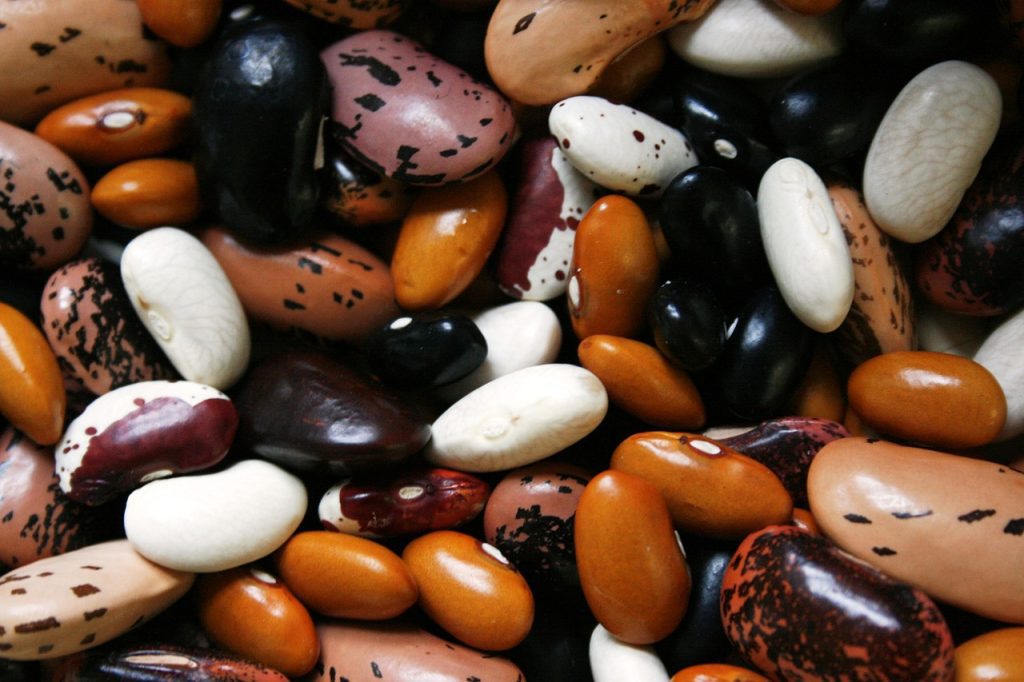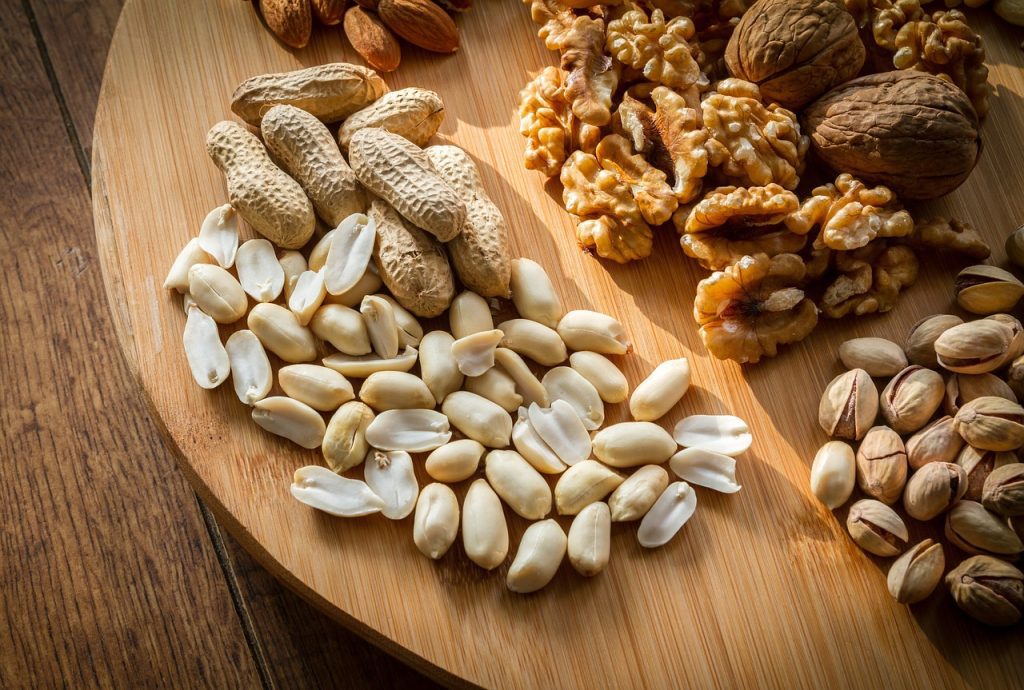Protein is an essential nutrient that plays a crucial role in the human body. It is essential for growth, repair and maintenance of tissues, and helps regulate enzymes, hormones, and other vital bodily functions. Traditionally, most people associate protein with meat, poultry, fish, dairy and other animal-based sources. However, there are a number of surprising sources of protein that many people may not be aware of, which can provide a healthy and sustainable alternative for those who follow a vegetarian or vegan diet, or for those who are looking to diversify their protein, fibre, and essential vitamins intake.
1. Beans and Legumes

One of the most surprising sources of protein is beans and legumes. Lentils, chickpeas, black beans, and kidney beans are all examples of legumes that are high in protein. A cup of cooked lentils contains 18 grams of protein, while a cup of black beans contains 15 grams. Legumes are also an excellent source of fibre, iron, and other essential vitamins and minerals. They are versatile, easily incorporated into a variety of dishes, and can be used in salads, soups, stews, and dips.
For those of you who are new to this whole healthy lifestyle thing, you’re probably a bit confused about what a few of those things are I mentioned in the last paragraph. I don’t really have space to go through every one of them. Therefore, I’ll just pick one of them, which is legumes.
Legumes
Legumes are a diverse group of plant-based foods that are a staple food in many parts of the world. They include a wide range of beans, lentils, chickpeas, and peas that have many nutritional benefits. Legumes are an excellent source of protein, fibre, and a variety of essential vitamins and minerals. You should definitely make them part of a healthy and balanced diet.
Protein
Legumes are rich in protein, providing an important source of this essential nutrient for those following a vegetarian or vegan diet. A single serving of legumes can provide between 7 and 18 grams of protein, depending on the type of legume. For example, lentils contain 18 grams of protein per cup, while chickpeas contain 14 grams of protein per cup. The high protein content of legumes makes them a useful substitute for meat, poultry, and other animal-based sources of protein.
Fibre
Legumes are also an excellent source of fibre, which is important for maintaining digestive health. Fibre helps regulate digestion and can lower the risk of certain digestive conditions, such as constipation, diverticulitis, and colon cancer. A single serving of legumes can provide between 6 and 12 grams of fibre, depending on the type of legume. This fibre can also help you feel full, making it easier to manage your weight.
Essential Vitamins and Minerals
In addition to protein and fibre, legumes are also a good source of a variety of essential vitamins and minerals, including iron, magnesium, and potassium. Iron is important for maintaining healthy red blood cells,. Magnesium helps regulate muscle and nerve function. Potassium helps regulate blood pressure. A single serving of legumes can provide between 15% and 35% of the daily recommended value of these essential vitamins and minerals, depending on the type of legume.
Versatility
Legumes are also incredibly versatile. They can be used in a variety of dishes, making them a staple food in many cuisines around the world. They can be added to salads, soups, stews, and dips, or used as a main ingredient in dishes such as chilli and burritos. Legumes can also be sprouted, adding a fresh, crunchy texture to sandwiches, salads, and other dishes.
2. Nuts and Seeds

Nuts and seeds are also excellent sources of protein, especially almonds, pumpkin seeds, and chia seeds. Almonds, for example, contain 6 grams of protein per one-ounce serving. They are also rich in healthy fats, fibre, and magnesium. Pumpkin seeds are another excellent option, with 7 grams of protein per one-ounce serving, along with healthy fats, iron, and magnesium. Chia seeds are also a good source of protein, with 4 grams per one-ounce serving. Chia is also good for fibre, healthy fats, and calcium. Since I explained what legumes are and how they benefit us. I think I’ll continue the trend I started by talking about another food that people may not know too much about.
Chia
Chia seeds are tiny black and white seeds that are packed with nutrients and have been used as a food source for thousands of years. In recent years, they have gained in popularity as a health food and nutritious ingredient in a variety of dishes. Chia seeds are a good source of fibre, protein, healthy fats, and a variety of essential vitamins and minerals, making them an excellent addition to any diet.
Fibre
One of the key benefits of chia seeds is their high fibre content. Fibre is important for maintaining digestive health, regulating blood sugar levels, and helping you feel full. A single serving of chia seeds can provide 11 grams of fibre. That’s over 40% of the recommended daily value. This high fibre content makes chia seeds an excellent food for those looking to manage their weight and maintain a healthy digestive system.
Protein
Another benefit of chia seeds is their high protein content. Protein is an essential nutrient that is important for building and repairing tissues, regulating enzymes, hormones, and other bodily functions. A single serving of chia seeds contains 4 grams of protein, which is 8% of the recommended daily value. This high protein content makes chia seeds an excellent food for those following a vegetarian or vegan diet.
Healthy Fats
Chia seeds are also a good source of healthy fats, including omega-3 fatty acids. Omega-3 fatty acids are important for maintaining heart health, reducing inflammation, and improving brain function. A single serving of chia seeds contains 5 grams of omega-3 fatty acids, making them an excellent food for those looking to maintain a healthy heart and brain.
Essential Vitamins and Minerals
In addition to fibre, protein, and healthy fats, chia seeds are also a good source of a variety of essential vitamins and minerals, including calcium, iron, and magnesium. Calcium is important for maintaining healthy bones and teeth. Iron is important for maintaining healthy red blood cells and carrying oxygen to the body. Magnesium helps regulate muscle and nerve function, and is also important for maintaining a healthy heart. A single serving of chia seeds can provide 18% of the recommended daily value of calcium, 6% of the recommended daily value of iron, and 30% of the recommended daily value of magnesium.
Versatility
Chia seeds are also incredibly versatile and can be easily incorporated into a variety of dishes. You can add them to smoothies, oatmeal, and yoghurt, or used as a topping for salads and soups. They can also be mixed with water to form a gel, which can be used as an egg substitute in baking recipes.
3. Whole Grains

Another surprising source of protein is whole grains, such as quinoa, bulgur, and farro. Quinoa, in particular, is a complete protein, meaning that it contains all of the essential amino acids that the body needs. A cup of cooked quinoa contains 8 grams of protein, along with fibre, iron, and other essential vitamins and minerals. Bulgur and farro are also good sources of protein, with 6 grams and 7 grams per cup of cooked grain, respectively.
I’ve got to be honest with you, quinoa, bulgar, and farro are all foods that kind of confuse me. I mean, I eat them but what the heck are they? Again, I’m not going to write about all three as space won’t allow it, so let’s just choose the last one.
Farro
Farro is a type of whole grain that has been enjoyed for centuries in Mediterranean and Middle Eastern cultures. This nutritious grain is a staple in many traditional dishes and is becoming increasingly popular around the world as people seek out healthier food options. Farro is packed with nutrients and has numerous health benefits, making it an excellent food to add to your diet.
Fibre
One of the key benefits of farro is its high fibre content. Fibre is important for maintaining digestive health, regulating blood sugar levels, and helping you feel full. A single serving of farro can provide up to 6 grams of fibre, which is over 20% of the recommended daily value. This high fibre content makes farro an excellent food for those looking to manage their weight and maintain a healthy digestive system.
Protein
Another benefit of farro is its high protein content. Protein is an essential nutrient that is important for building and repairing tissues, regulating enzymes, hormones, and other bodily functions. A single serving of farro contains 6 grams of protein, which is 12% of the recommended daily value. This high protein content makes farro an excellent food for those following a vegetarian or vegan diet.
Essential Vitamins and Minerals
Farro is also a good source of a variety of essential vitamins and minerals, including B vitamins, magnesium, and iron. B vitamins are important for maintaining healthy skin, hair, and eyes, while magnesium helps regulate muscle and nerve function, and is also important for maintaining a healthy heart. Iron is important for maintaining healthy red blood cells and carrying oxygen to the body. A single serving of farro can provide up to 20% of the recommended daily value of magnesium, and 10% of the recommended daily value of iron.
Versatility
In addition to its health benefits, farro is also incredibly versatile and can be used in a variety of dishes. You can cook and served it as a side dish, add it to soups and stews, or use it in salads for added texture and nutrition. Farro is also a great alternative to traditional pasta. You can use it in place of pasta in many dishes, providing a nutritious and delicious option.
Wrapping It All Up
In conclusion, protein is an essential nutrient that is crucial for good health and well-being. While animal-based sources of protein are well-known, there are many surprising sources of protein that can provide a healthy and sustainable alternative. From beans and legumes to nuts and seeds, whole grains, and seafood, there are a variety of options available for those looking to diversify their protein intake. With these sources, it is possible to meet daily protein requirements without relying solely on meat, poultry, and other animal-based sources.
If you’re looking for more ideas, suggestions, or advice on healthy eating and foods, then we have lots of ideas over here.
Read More
- Why Fighting Chronic Stress Is Everybody’s Fight
- Alcohol Consumption Damage to the Body, Mind, and Family
- The Benefits of a Healthy Lifestyle
- 4 Common Ankle Injuries and How to Treat Them
- What Are The Benefits of Vaping Over Smoking?
Disclaimer: The information provided on Healthy Lifestyles for All is intended for general educational purposes only and should not be considered as medical advice. Please consult with your GP or other health professional before making any significant changes to your diet, exercise routine, or any other aspect of your lifestyle. We are not responsible for any adverse effects or consequences resulting from the use of the information provided on our blog.
Comments: I hope you enjoyed reading this post as much as I enjoyed writing it. If you liked it, please leave a comment. If you didn’t like it, disagree with something I have written (I’m okay with that), or think I got something wrong (that’s okay too), please leave a comment as well. We only truly learn from our mistakes, so I am happy to have mine pointed out.
Affiliate Links: Please also note that I may make a small amount of money if you buy one of the products I recommend in any of my blog posts. Rest assured that I have done my own due diligence, and only recommend products that have been tried and tested, and have extremely good feedback. Additionally, many of the products I recommend have 30 or 60-day money-back guarantees, so you can buy in the confidence that if a particular product is not right for you, you can get a refund.

